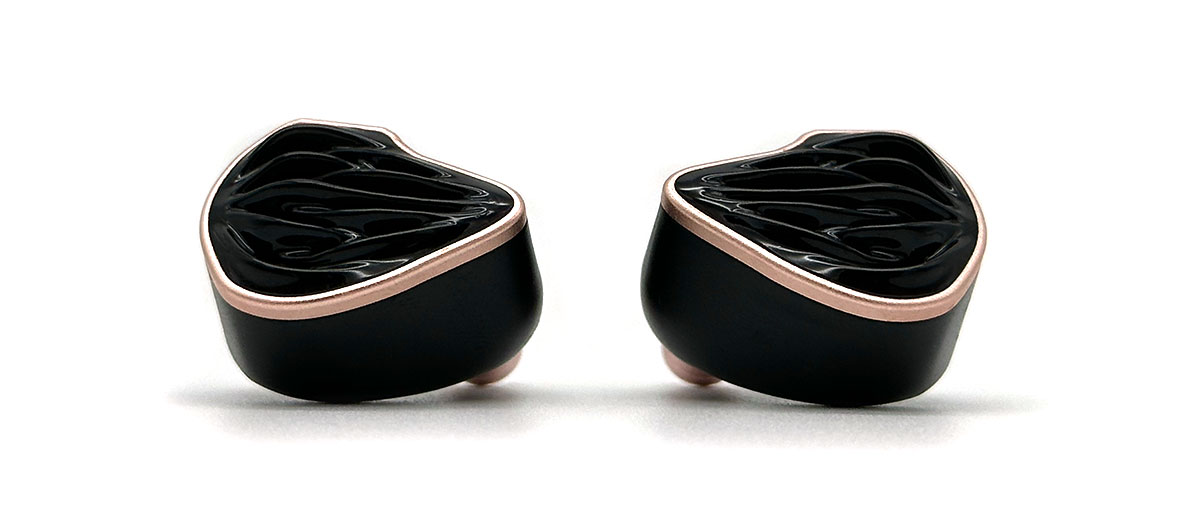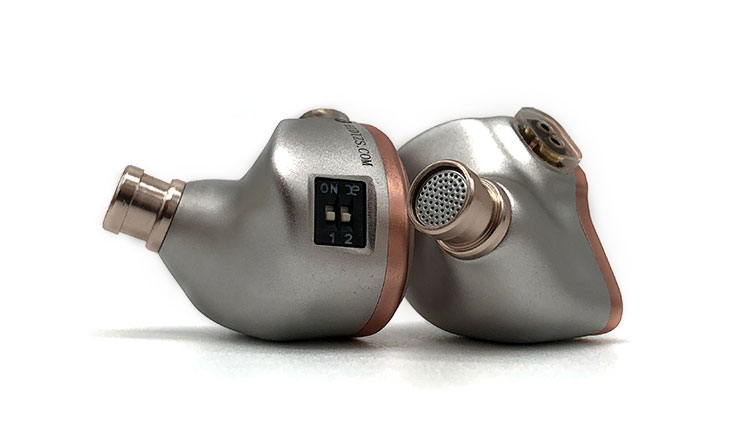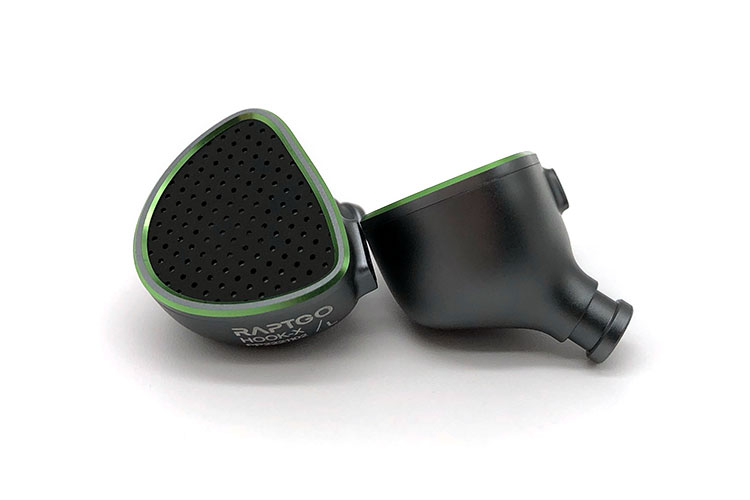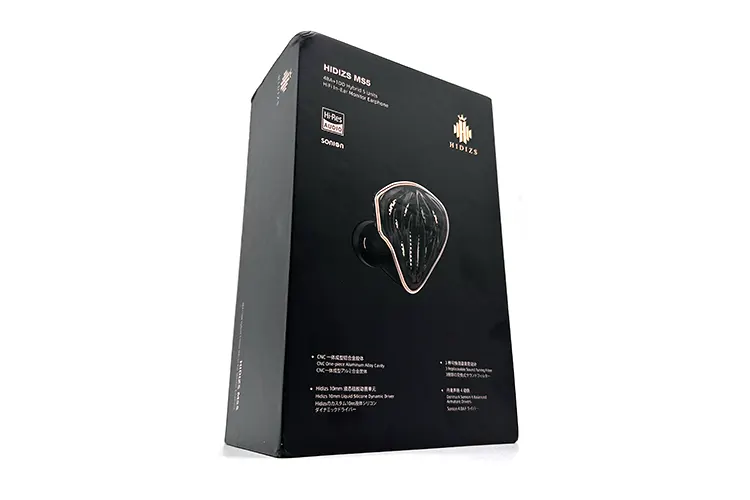Synergy
Efficiency
The Hidizs MS5 5.3Ω impedance rating is relatively low in the context of most IEMs though hybrids are increasingly heading in this direction this last year or two. With an SPL of 104dB @1kHz though the MS5 should not present any issues with low gain outputs in SE, (or balanced) with decent DAPs.
The Chord Electronics Mojo 2 is an easy pick for IEM users listening on the go since it packs 600mW of single-ended power that’s more than enough for efficient monitors.
Naturally, it easily excited the hybrid drivers of the MS5 bringing it to my comfortable listening levels staying pretty often at a fairly low volume
With a 7.2Vrms single-ended headphone output, the EarMen Angel requires more finesse to not blast your eardrums using the MS5. The juice the Angel pushes to the MS5 limits me to listen within the first ten turns of the volume which in this case is still on the very low end of its full capacity.
Pairings
Rock songs played with more confidence on the Mojo 2/MS5 pairing with excellent better dynamics. Having the MS5 plugged into the Mojo 2 is a treat for those wanting a more sophisticated and better-layered composition.
The Angel provides strict guidelines for the MS5 to work on but the two bonded together beautifully. It is more metallic on cymbals and gives violins a sprightlier edge.
Listening to the Mojo 2, stringed instruments are better weighted and more emotive. Piano achieves a profound response that showcases the capability of the MS5 to sound natural.
Between the Angel and the Mojo 2, the MS5 adapts to the scale of its source. And so, with the Angel being thinner, it was able to dissect a playback of a crowded audience more effortlessly. The Mojo 2 is more dynamic and better for hunting details but the timbre of the Angel/MS5 pairing shows the breathier parts much more readily.
Select Comparisons
Hidizs MD4
$189
Technical
The Hidizs MD4 is an all-BA 4-driver combo IEM as opposed to the MS5 hybrid 5-driver design. It uses a three-way crossover to interlock its drivers with a 3D-printed acoustic sound tube which helps in interference between the drivers.
Buying either of the two is like getting more than one IEM. For the MS5, it is through the replaceable screw-on nozzles. The MD4 on the other hand uses switches to achieve the same result.
In both cases, the balanced tuning style is reserved for the sound signature target of Hidizs. Where it begins to differ is that aside from bass and treble choices in the MS5, the MD4 adds a fourth type for warm listening.
Design
Putting the obvious out of the way, the outline of the face plate and housing of the two units is nearly identical. It’s expected since Hidizs has done the same to their other releases but scrutiny reveals that not everything is simply copied.
Looking at the face, the MD4 has a more traditional appearance that features a rose gold Hidizs logo in the middle to elevate. The MS5 has the visage of a black-colored wing that lets through rose gold accents underneath.
Some lines of the MS5 are sharper than the MD4 and it also loses the raised plastic receiver of the 0.78mm 2pins. Having an additional dynamic driver inside might also be the reason why the newer MS5 also feels a bit weightier in the ears when worn.
Performance
Missing the enjoyable punch of the MS5, it is pretty obvious the MD4 lacks a dynamic driver. Bass extension is not as deep and it doesn’t have the same resolving details in low-end note texture.
The MD4 does have the ability to show obvious edges, the MS5 simply overtakes it with its juicier and bigger character creating an exciting profile that brims with personality.
It will be a bit of a misnomer if you think the balanced target of the two units is set similarly. Comparatively, the MD4 didn’t nail the same natural timbre achieved by the MS5.
The MD4 is a bit nasal and recessed especially with female singers. High-pitched voices however get a more cohesive tonality when staying in the upper frequencies, if only sounding more anemic.
Checking with subtleties of stringed instruments, it is great that details on the MD4 do peek through even if it is less forward. What is similar to the MS5 is the softer twang that is friendly to the ears for long listening sessions.
Dynamics is not bad on the MD4 but it is not as refined as the MS5 when playing poorly recorded music where it shows more harshness.
Raptgo Hook-X
$209
Technical
A special one when it was released, the way Hook-X combined for the first time a planar magnetic driver with PZT tech took a jab at the trend of regular hybrid dynamic and BA IEMs.
The planar driver used in the Hook-X is bigger by 4.2mm than the dynamic ones installed in the MS5. To achieve the same frequency range of 20Hz to 40 kHz, instead of a BA driver for treble extension, the Hook-X relies on its custom 18-layer double-sided PZT driver.
It’s interesting as well that in both designs, the face has been allowed to breathe through punched vents. The Hook-X is more open still and has larger holes showing its intent to reduce ear fatigue and to open up the stage.
Design
While both are universally shaped IEMs, the MS5 is the one that shows more of the distinct outline of the ear profile it is designed after. The Hook-X feels less intimidating to wear since it is not as wide as the MS5.
I didn’t have to weigh to confirm that the MS5 is ever so slightly denser than the Hook-X. Not to say wearing the MS5 is less comfortable, on the contrary, I’d say the weight gives it a reassuring trait.
The Hook-X also has perforated the faceplate but instead of using the combination of resin and metal like the MS5, it uses a papery material that is papery to the touch.
Looking at the implementation, the Hook-X is designed to allow more air to pass through compared to the tinier holes in the MS5.
Performance
While it doesn’t have the same dynamic thump as the MS5, the Hook-X energizes the low-end by lifting the sub-bass more and showing off its bigger size. The MS5 also provides more natural pacing relative to the more boosted Hook-X.
The Hook-X will satisfy those into a delineated bass line. The detail is more or less equal but I have a much easier time hearing the edges with its crisper nature. Note that the Hook-X does soften some areas in this region as well.
The MS5 feels roomier for vocals, but the Hook-X offers a bigger picture in return. Unlike the smooth and natural tuning of the MS5, the Hook-X is applying rougher strokes on whispery notes.
Horns are brassier on the MS5 aided by a more dynamic capacity. The Hook-X is also great and relaxing but those who listen to a lot of violins will find the MS5 evoking a neater transition between notes.
THOR Mjolnir MKII
$399
Technical
The THOR Mjolnir MKII uses a single but sizable 12.56mm Fusion Diaphragm dynamic driver. The name comes from its blend of DLC, PEEK, and Polyurethane materials that seek to combine individual advantages into a single composition.
Together with powerful magnets with 1.6T magnetic flux that repel the earpieces when brought together, the Mjolnir MKII comes down to a lower bass extension than MS5.
What the Mjolnir MKII can’t do is change personalities since it doesn’t have the same tuning filters as the MS5. There is however a replaceable Knowles dampening module on the Mjolnir MKII to change the level of pressure relief.
Design
The first thing to notice with the Mjolnir MKII is the lack of metal. What it’s made from is undisclosed but place it under direct sunlight and it shows a bit of translucency. The one-piece housing also has a glazed look that does catch fingerprints easier than the MS5.
With the MS5 opening wide its wings for the design of its face, the Mjolnir MKII went in the direction of a dynamic ornamented top. Glimmering in multiple colors, the Mjolnir MKII may just be the one looking to send a louder statement to onlookers.
Performance
Mature is the word that came to mind when I heard the MS5 against the Mjolnir MKII. Not hiding its intentions, the Mjolnir MKII arrives with a much heavier wallop.
The Mjolnir MKII offers a playful character that extends to a low-end rumble that is very enchanting, lingering more than the MS5. It can suddenly switch gears to let bass strings bite with clarity wherein I find that the MS5 lags a bit in showing subtler notes.
With a lighter presentation, singers on the Mjolnir MKII also disperse more toward an open sound. This extends to the shouty region making it less able to hide bright singers from being sibilant.
The MS5 shows its skill for its preferred fuller sound. A piano accompaniment has a more affecting trait that makes it more agreeable to listen to for a long time.
While the Mjolnir MKII allows dynamic control of the drivers to dissect a busy scene, it lacks the refinement and extension of the MS5. A clapping live audience is enormous and enveloping in the MS5 and image placement is using the stage more uniformly.
Our Verdict
The Hidizs MS5 has many faces or should I say many sound signatures, all of which bring something new and interesting to the table for the listener. There’s no gimmick here with the swappable filters as it opens tweaking possibilities to conform to different personality types and moods.
I recommend trying the default filters installed since it already has a pleasing mix of fun and liveliness making it my favorite of the choices provided. Both the treble and bass filters have their use case though and I can see them being favored by others.
Hidizs MS5 Technical Specifications
- Product Name: 4BA+1DD Hybrid 5 Units HiFi In-Ear Monitor Earphone
- BA Driver: Denmark Sonion (High-frequency E50DT composite unit, Mid-high frequency unit 2389, Low-frequency unit 17A003)
- Dynamic Driver: 10mm Liquid Silicone (Hidizs custom dynamic driver with Kevlar fiber and liquid silicone technology)
- Appearance: CNC One-piece Aluminum Alloy Cavity
- Tuning Filter: high frequency, balanced, low frequency
- Frequency Response: 20Hz-40kHz
- Sensitivity: 104dB
- Impedance: 5.3W
- Cable: High purity 6N single crystal copper silver-plated wire and high purity 6N single crystal copper wire 8-strand mixed, cable length 1.2m
- Earphone connector: 0.78mm 2pin Gold-plated socket with detachable cable design
- Plug: 3.5mm Gold-plated plug
- Weight: Approx. 13.6g (excl. earphone cable)







